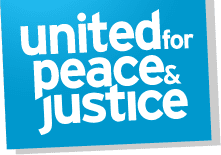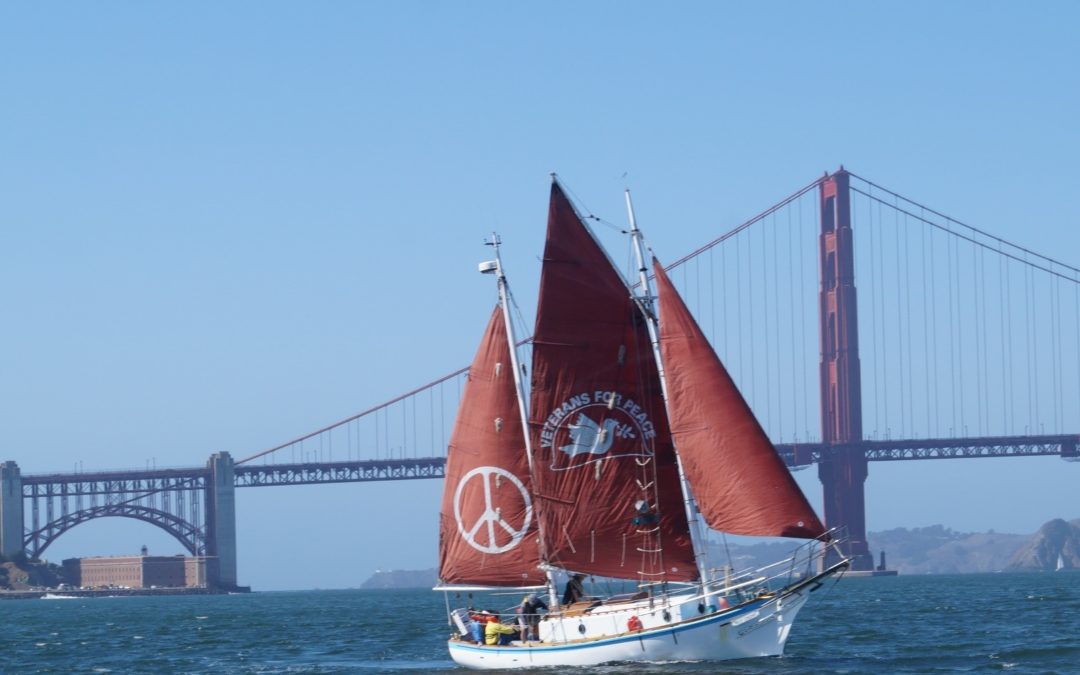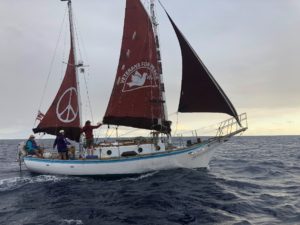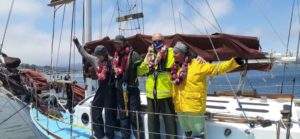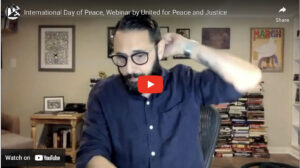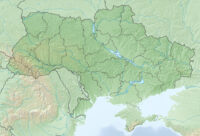by Gerry Condon
“They are here! They are here! The Golden Rule is sailing under the Golden Gate Bridge into San Francisco Bay.” These were the excited shouts of supporters on Tuesday, June 1, when the historic Golden Rule anti-nuclear sailboat arrived in SF Bay, after a grueling 29-day voyage from Honolulu.
“What is the Golden Rule?” some people asked. “You mean like in the Bible?”**
The first captain of the storied boat, Albert Bigelow, a retired World War II commander, wrote a compelling book, The Voyage of the Golden Rule – An Experiment with Truth, but he did not tell us why he named the 34-foot ketch Golden Rule. The choice is self-evident, however, from the actions that he and his crew of Quaker peace activists took in 1958. The four men set sail from San Pedro Harbor in Los Angeles, announcing their intention to sail into the nuclear test zone in the Marshall Islands, where the U.S. had exploded 67 nuclear bombs, beginning in 1946. Those nuclear bombs devastated the homes, health, and livelihood of the Marshallese people, and sent deadly radiation into the atmosphere all around the globe.
“Do NOT treat others in ways that you would NOT like to be treated.” Do not unleash the horrific power of nuclear bombs, which can destroy all life on earth!
Golden Rule sails from Honolulu for San Francisco photo: Ann Wright
Under orders from the Atomic Energy Commission, U.S. Coast Guard stopped the boat in Honolulu, and arrested the crew, who spent 60 days in jail. However, another U.S. family, inspired by the Golden Rule crew, succeeded in sailing their boat, the Phoenix of Hiroshima, into the Marshall Islands test zone. The father and captain, Dr. Earl Reynolds, a medical researcher who had studied the effects of radiation on the children of Hiroshima, was arrested and put on trial in Honolulu for two years. He was eventually exonerated because the U.S. government had acted illegally.
The arrest and jailing of the two captains and crew garnered international media attention and increased opposition to nuclear testing and nuclear weapons. Atmospheric nuclear testing by the U.S., the UK and the Soviet Union was ended in 1963 when President Kennedy and other world leaders signed the Partial Test Ban Treaty. The treaty prohibited nuclear testing in the atmosphere, under water and in space, but allowed it to continue underground. The French government declined to sign, and continued to test their nuclear weapons in the atmosphere.
The Golden Rule Influenced JFK and Greenpeace
Notably, one of the Golden Rule crew members, George Willoughby, was among a group of disarmament activists who met with President Kennedy prior to the treaty signing. The Golden Rule also inspired the founding of Greenpeace in Vancouver British Columbia. Their first act was to buy a boat and sail into the nuclear test zone off of Alaska.
The Golden Rule was sold in 1958, and passed into the hands of several families, who sailed it in the South Pacific and the Caribbean. The boat then disappeared into obscurity until 2010, when it sank in a gale in Humboldt Bay on the northern California coast. The wreck was dragged up onto shore and was about to become a bonfire before its Cold War legacy was discovered.
The local chapter of Veterans For Peace decided to restore the historic boat and its mission. Along with Quakers, boat lovers and volunteers, the veterans spent the next five years restoring Golden Rule to its original glory. Since June 2015, the Golden Rule has sailed up and down the west coast of North America, from Vancouver, British Columbia to Ensenada, Mexico, with many educational stops in Washington, Oregon and California.
Sailing to Hawai’I 61 Years Later
In July 2019, Veterans For Peace, who owns and manages the Golden Rule, sailed the 34-foot ketch from San Diego to Hawai’i with the intention of proceeding on to the Marshall Islands, the original destination of the 1958 crew. But once again, the Golden Rule’s voyage to the Marshall Islands was stymied. Because of the global COVID-19 pandemic, the Marshall Islands remains closed to international boats.
While in Hawai’i, the Golden Rule team met with members of the Marshall Islands community, who told them stories of the severe medical problems and forced relocation of residents of several islands that were blown up or severely contaminated with radiation from the U.S. nuclear tests. Twenty-three nuclear tests were conducted by the U.S. on Bikini Atoll, and 44 on or near Enewetak Atoll.
During the 21 months that the Golden Rule was in Hawai’i, project manager Helen Jaccard and others spoke in over 100 events in communities in all the Hawaiian Islands, except for Ni’ihau, concerning the dangers of nuclear weapons and the growing danger of nuclear war. With its red (tan bark) sails emblazoned with a large peace sign and the logo of Veterans For Peace, the Golden Rule was a familiar sight to many in the Hawaiian islands.
“We have made many friends in Hawaii, who have shown us how the Hawaiian Islands have been militarized by U.S. bases and continued bombing, causing devastating environmental damage and threatening native Hawaiian culture. This also must end,” said Helen Jaccard.
After 29 days at sea, the Golden Rule crew arrives in Sausalito. photo: Ann Wright
The Golden Rule and her four crew members, Captain Kiko Johnston-Kitazawa of Hilo, Big Island, Hawai’i, Captain Malinda Anderson of Kona, Big Island, Hawai’i, Michelle Kanoelehua Marsonette of Albany, Oregon, and Nolan Anderson of Seattle, Washington, were at sea for 29 days and nights. With shifts of four hours on and four hours off, and exposed to the open sea, they were short on sleep, and often cold and wet. They were greeted with hugs and lei’s upon their arrival. Happy and relieved, they wanted nothing more than hot showers, a good meal and sleep.
“We are so grateful to this brave crew of two women and two men,” said Col. Ann Wright, who saw the crew off from Honolulu and welcomed them upon their arrival in Sausalito. “A cross-ocean voyage in a small wooden sailboat takes courage, sacrifice and sustained effort, just what it will take to end the threat of nuclear war.”
Captain Kiko Johnston-Kitazawa agreed: “We were weeks out at sea without any sign of land, and then suddenly we are here. This is a good metaphor for the struggle to abolish nuclear weapons.”
The San Francisco Chronicle heralded the arrival of the Golden Rule with a fine article and a great photo spread, including stunning photos on their front page as well as the front and back page of the local section. Dennis Bernstein interviewed Captain Kiko Johnson-Kitazawa, Captain Malinda Anderson, Col. Ann Wright, and project manager Helen Jaccard for 30 minutes of KPFA’s Flashpoints.
Come See the Golden Rule in Berkeley
The Golden Rule will remain in the San Francisco Bay (Berkeley Marina) throughout the summer. Those wishing to visit the boat, to crew, to go out sailing in San Francisco Bay, can contact project manager Helen Jaccard at vfpgoldenruleproject@gmail.com or call her at 206-992-6364. Helen will also be happy to arrange a presentation for your organization, school or church.
In the Fall, Golden Rule will embark on another epic voyage. She will sail the “Great Loop,” down the Mississippi River, along the Gulf Coast, around Florida, up the East Coast, and through the Great Lakes, stopping for events in dozens of communities, often in areas where U.S. nuclear weapons and nuclear power plants are located. This voyage will take over one year.
Help Keep the Wind in Golden Rule’s Sails
You donations keep the Golden Rule sailing. You can be mail a check to VFP Golden Rule Project, PO Box 87, Samoa, CA 95564, or you can donate online at www.vfpgoldenrule.org
“We are sailing for a nuclear-free world and a peaceful, sustainable future,” says Helen Jaccard. “What better way to bring a message of peace and sustainability than this beautiful sailboat and its storied history, which inspires us and gives us hope for the future.”
Gerry Condon serves as president of the Golden Rule Committee, which manages the day-to-day operations of the Golden Rule. He is a former president of Veterans For Peace, and he serves on the Administrative Committee of United For Peace and Justice.
Contact:
Helen Jaccard
Golden Rule Project Manager
email: vfpgoldenruleproject@gmail.com
phone: 206-992-6364
website: www.vfpgoldenrule.org
Facebook: VFP Golden Rule Project
** According to Wikipedia: The Golden Rule is the principle of treating others as one wants to be treated. It is a maxim that is found in most religions and cultures.[1] It can be considered an ethic of reciprocity in some religions, although different religions treat it differently.**
The maxim may appear as a positive or negative injunction governing conduct:
- Treat others as you would like others to treat you (positive or directive form)
- Do nottreat others in ways that you would not like to be treated (negative or prohibitive form)[1]
- What you wish upon others, you wish upon yourself (empathetic or responsive form)[1]
The idea of the Golden Rule dates at least to the early Confucian times (551–479 BCE), according to Rushworth Kidder, who identifies the concept appearing prominently in Buddhism, Islam, Christianity, Hinduism, Judaism, Taoism, Zoroastrianism, and “the rest of the world’s major religions”.[2] 143 leaders of the world’s major faiths endorsed the Golden Rule as part of the 1993 “Declaration Toward a Global Ethic”.[3][4] According to Greg M. Epstein, it is “a concept that essentially no religion misses entirely”, but belief in God is not necessary to endorse it.[5] Simon Blackburn also states that the Golden Rule can be “found in some form in almost every ethical tradition”.[6]
